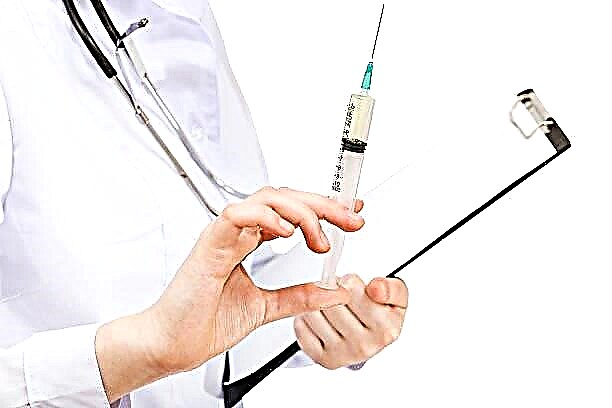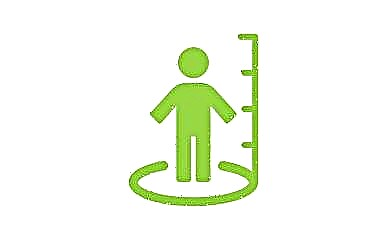
The sixth month of pregnancy smoothly completes the excellent time of a relatively easy and not burdensome second trimester. The third will begin, and it will not be so cloudless. It is already quite difficult to hide the pregnancy from others in the sixth month: the belly of the expectant mother is growing very intensively, the waist is almost invisible. Everything in a woman's body begins to prepare in advance for childbirth.
General information about the term
The sixth month is the last in the second trimester. If we are talking about the obstetric month, then it will include the 22nd, 23rd, 24th and 25th weeks of pregnancy. The sixth calendar month has 23rd, 24th, 25th and 26th weeks... This discrepancy arises due to the difference in the methods of counting the period: obstetricians count from the first day of the last menstruation, while in each obstetric month (like the lunar) there are exactly 4 weeks. There are exactly 10 obstetric months in pregnancy.
Calendar months contain more days (30–31), and therefore the ordinal numbers of the weeks are slightly ahead of the obstetric months. There are exactly 9 calendar months in pregnancy.
Be that as it may, count from the first day of the last menstrual period and focus on the period from 22 to 26 weeks inclusive. It is this period that we will consider in more detail.

Fetal development
At this time, your baby is entering a new most important milestone in his development - he has completed the formation and development of the alveoli, his lung tissue begins to prepare for spontaneous breathing... A gradual production of a special substance begins - a surfactant. Alveoli are tiny vesicles. On the first breath, they will be filled with air, but upon exhalation, their walls may stick together, and then acute respiratory failure develops - one of the most common causes of death of newborns immediately after childbirth.
It is important that the surfactant accumulates enough, and then the baby can breathe on his own without problems. It is the accumulation of surfactant from 6 months to the very birth that the child in the womb will be engaged in. And besides, other interesting metamorphoses will occur with him, which are worth considering weekly.


22 week
This is a significant week, it gives new status to the fetus. Now, if, for some reason, suddenly contractions begin, water flows away, what is happening will not be considered a miscarriage. This will be premature birth, and doctors will have to save the baby. Almost all children at this time reach 500 grams in weight, and their height is already very solid - up to 30 centimeters.
Previously, the standards for the provision of medical care meant that resuscitation measures provided only to a child who reached a weight of 500 grams, now they also save children who weigh less. True, without guarantees. The chances of survival for a baby born at 22 weeks will be low: there is not yet a sufficient amount of surfactant, there is no required amount of subcutaneous adipose tissue, such a baby will not be able to breathe or keep the heat of his body. He cannot exist outside of intensive care.... And even if he survives, the chances are high that the child will be disabled. The nervous system (paralysis, paresis) and sensory organs (blindness, deafness) are most often affected. The task of the mother at the beginning of the 6th month is to do everything to prevent premature birth, to follow all the doctor's recommendations.
The child at this time becomes more emotionally developed. If you press your palm to your stomach, it will respond with animation, with loud and harsh sounds, the baby is frightened, begins to "rush" and is already quite weighty often pushed from the inside. The baby looks almost like a newborn. It remains to dig up subcutaneous fat.


23 week
A dramatic change is taking place in the child. In one week he manages to add about 20% of his total mass, and this is a new record. By the end of this seven-day period babies weigh on average 550-590 grams with an increase of about 30 centimeters.
It should be noted that from this period it is no longer worth focusing on height-weight norms... The embryos developed at about the same rate and looked almost the same. But now your child is a person. He has genetically based traits: the size of the nose and the length of the legs and arms, complexion. If the parents are tall, then the child will have considerable growth, if they are short, then the fetus will be slightly smaller. However, both will gain weight equally intensively.
At this time, sweat and sebaceous glands begin to work.
Hearing is well developed, and the baby already has his own preferences: he likes some sounds, others do not. Theoretically, you can start the kid's acquaintance with musical classics - usually children in the womb are very fond of Vivaldi, Chopin and Beethoven.


24 week
By the end of this week the weight increases to 600-650 grams. The baby grows up to 31 centimeters... The movements of the children are becoming more active, more and more often mothers begin to notice that their children already have their own character and have their own temperament: some are calm and sleepy, others are restless.
Active loss of light translucent hair that covers the skin begins - lanugo. Together with them, an abundance of cheese-like lubricant leaves, and the child begins to look more attractive. The skin begins to smooth out, the cheeks are already there, it remains for the buttocks to form.


25 week
They improve reflexes that will help the baby survive in the new habitat after he is born. Even now, the child has several dozen reflex skills: he knows how to suck and swallow, has grasping and tendon reflexes, learned to blink, spit, and has an instinct for self-preservation.
The fetus has grown to 34 centimeters, "heavier" to 800 grams... A gradual change in the color of the skin and hair begins. If all children were blond before the sixth month, then now there are brown-haired, brunettes and redheads, and the skin becomes pinkish instead of deep red. If the child is dark-skinned, then right now his skin receives a characteristic pigment.
If childbirth occurs now, the WHO estimates the chances of survival at 15-17%.
Your child has begun to dream. In this case, the phase of REM sleep prevails over the phase of slow sleep. What the baby sees at this time in a dream is difficult to say. Most likely, his dreams are closely related to his everyday life: the beat of his mother's heart and the sound of her voice, with the umbilical cord.


26 week
The last days of the sixth month fall on the 26th obstetric week. It is she who completes the second trimester. Children begin to take a head presentation. Up to 90% of babies behave this way. The remaining 10% sit or lie across, but they still have enough time to roll over - there is still enough room in the uterus for such "maneuvers".
By the end of the sixth month, babies grow up to 35 centimeters and weigh from 800 to 900 grams... Smell receptors begin to form, and in boys, testicles begin to descend from the abdominal cavity, where they were formed, into the scrotum, where they should be.
If childbirth occurs at the end of the sixth month, then the survival rate averages up to 35%.

Well-being of the expectant mother
From the sixth month, the belly begins to grow. Even those who were worried about the belly not arriving are now thinking about changing their wardrobe: the belly grows at a tremendous rate and from week to week it becomes more and more noticeable to others - and there is no point in hiding something. Soon the woman will go on maternity leave. In the seventh month, she will be given a sick leave for pregnancy and childbirth.
The production of placental lactogen is activated, and from this month the mammary glands of the expectant mother begin to actively prepare for breastfeeding. Many already notice that large and lush breasts (and it became just that, regardless of the size of the bust before pregnancy!) Began to produce colostrum. From this month on, it is advisable to tightly prepare the breasts for the upcoming breastfeeding after childbirth.
First, it is important to properly care for the mammary glands: wash them twice a day with warm water to prevent infection in the milk ducts, because colostrum is a breeding ground that is almost ideal for the reproduction of pathogenic bacteria.
Secondly, now we need a special support bra made from natural fabrics and with wide shoulder straps. If there is itching associated with stretching of the skin in the area of the mammary glands, moisturize the skin with special anti-stretch marks., warmed vegetable oils or fat baby cream.


Experts advise wiping the nipples only with a coarse towel: this will stimulate and prepare them for feeding the baby. However, it is important to know when to stop: excessive stimulation of the nipples causes the production of oxytocin in the body, which can cause the onset of premature birth.
In primiparas (and in some cases in experienced mothers), training contractions can begin - unstable, unsystematic tensions of the uterine muscles. They are also called false contractions or Braxton Hicks contractions. Do not be afraid, because this is a normal, nature-based process - this is how the uterus prepares for real contractions that will begin in childbirth.
If there are no training fights, you also should not worry - this is also an absolute norm.... In itself, the beginning of training contractions does not mean that a woman is at risk of premature birth.

Weight gain can already reach 7-8 kilograms, and this is a rather tangible load on the legs, lower back and back. By the end of the sixth month, the legs begin to get tired more often, especially after a hard day, hemorrhoids may worsen and varicose veins may appear.
The amount of circulating blood has increased significantly, because now, in fact, there is a third circle of blood circulation - the uteroplacental. For this reason, a woman may sometimes experience shortness of breath and a rapid heartbeat. Increased production of blood cells often leads to a decrease in hemoglobin, which simply "does not keep pace" with increased blood circulation, and then anemia develops.
- Allocations... Normally, they remain transparent or white, without itching, odor, or with a slight sourish. They may have a slightly yellowish tinge due to the high levels of progesterone in the body. This month, leucorrhea is also conventionally considered the norm - leucorrhoea. This is due to the strong blood supply to the mucous membranes of the genital tract. If the leucorrhoea is profuse and in the way, you can use sanitary napkins. It is also important to wash more often in order to exclude the multiplication of vaginal secretions of pathogens in the nutrient medium.
- Uterus... The lower back and lower abdomen hurt due to the shift in the center of gravity, and also sometimes due to pinching of some nerve endings, because the bottom of the uterus has already risen to the level of the female navel. Internal organs are forced to make room. The size of the uterus is already so large that the stomach is compressed, and now a woman may suffer from heartburn due to the fact that the reproductive organ squeezes the digestive organ from below, causing gastric juice to flow into the esophagus.
- Pigmentation... Age spots of different sizes may appear, existing moles and freckles become brighter. You should not worry - in a few months after childbirth, the pigmentation will return to normal and freckles and moles will again become invisible.
- Against the background of calcium deficiency, fingers can go numb, legs cramp (calf muscles), especially often these sensations appear at night. It is important to talk to your doctor and start taking calcium supplements.
The mood and emotional background remain stable for now. But stress is still better to carefully avoid, because the consequences of exposure to stress hormones on the fetus (by the way, they penetrate the placental barrier) can be very deplorable.

Recommendations for this period
Following some simple guidelines can help you get through the sixth month easier.
- Limit physical activity... Reduce them by about 30% from the original. The best ways to keep fit, prepare for childbirth and not harm the baby are walking in the fresh air, swimming. But categorically, you should refuse jumping into the water from a springboard and fast diving (diving). Also, do not swim in stagnant natural reservoirs (lakes, ponds): there is a possibility of contracting infections that are transmitted with stagnant water. It is not forbidden to ride a bike, but common sense should tell a woman what is more correct to use an exercise bike (you can fall off the bike).
- Start doing yoga for pregnant women and breathing exercises... Now is a very good time to start breathing correctly, to practice breathing, which you will use during labor to reduce pain and ease the labor process.
- Carrying a baby at the end of the second and especially in the third trimester will be facilitated by wearing a special prenatal bandage. Talk to your doctor and follow him to an orthopedic salon.
- Try not to drink too much fluids or sit (lie) for too long in one position - edema may develop.


Dangers: what is allowed and what is prohibited?
Much is still allowed, but with a number of restrictions.
- Sex... You can have sex only if the doctor has no reason to suspect the threat of premature birth, if there is no placenta previa and functional cervical incompetence (ICI). It is better to choose poses for love pleasures such that no pressure is exerted on the grown tummy, and you should also not use sex toys, lubricants and now practice anal sex. The partner needs to be more delicate. Orgasm cannot harm the child, you can not worry about it. In women at this time, the increased blood supply to the genitals causes a strong sexual desire - this can and should be used in the absence of pregnancy complications.
- Travels... If you have not yet been by the sea on vacation and really want to fly by air, it is advisable to consult with a gynecologist before the trip. You can fly on airplanes, but before that it is still better to get the consent of a gynecologist. At the sixth month, most airlines do not ask a woman in a position for a doctor's certificate that she can fly, but there are companies that can already ask for such a certificate, and therefore it is better to take it from their gynecologist before the trip.
- Alcohol is still banned... Even champagne. Even at my best friend's wedding.
- No self-medication... Colds and flu are now not as dangerous as in the early stages, since the baby is reliably protected by the placenta and is fully formed, but improper treatment of colds and flu with anything can do significant harm.
If there is blood from the genital tract, bleeding appears, the abdomen pulls them, contractions have begun, the water has departed, you need to immediately call an ambulance. Remember, babies are already viable this month.


Analyzes and examinations
No significant and large-scale surveys are taking place this month. The woman visits the gynecologist in the antenatal clinic, as before, once a month, if there are complications of pregnancy - once every two weeks.
The expectant mother will be weighed, the blood pressure will be measured (at this time it should be below normal, and this is a physiologically determined norm with increased blood circulation and increased heart rate).The doctor will inquire about the presence of edema on the arms and legs, on the face. If you are overweight or swollen, a salt-free diet will be prescribed.
In some cases, according to individual indications, an ultrasound or ultrasound scan (Doppler ultrasound) may be prescribed to assess the uterine-fetal blood flow and the characteristics of the baby's circulation. The baby's gender is clearly visible on ultrasound examination until the middle of the sixth month. Then the probability of an accurate determination will begin to decrease: the fetus becomes cramped, so it begins to take a flexion position, while the umbilical cord and arms are often found between the legs - it becomes very difficult to see the genitals. Therefore, if the gender is not yet known, it is high time to find out this question. After 20 weeks, the accuracy of sex determination is the highest - up to 85%.

You will learn more about the development of the fetus in the sixth month from the video below.



